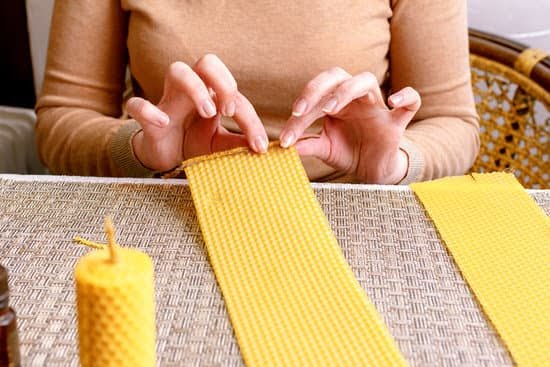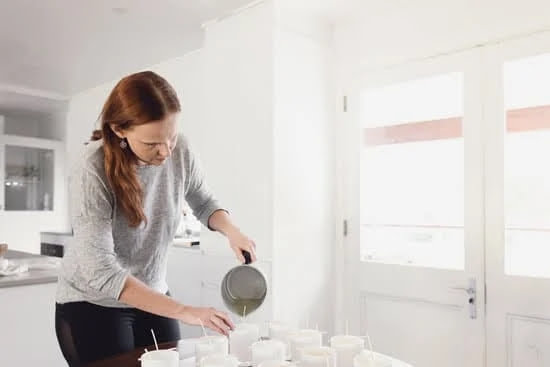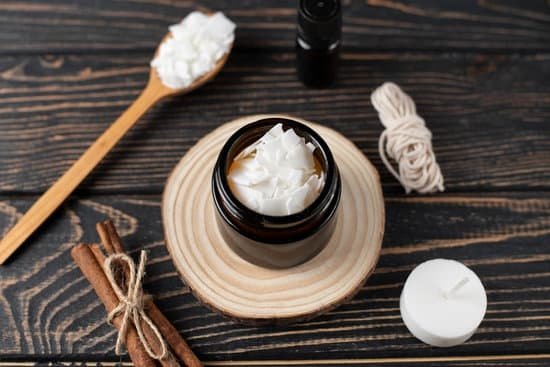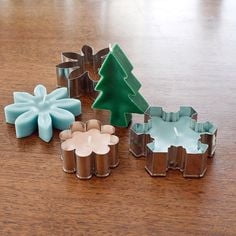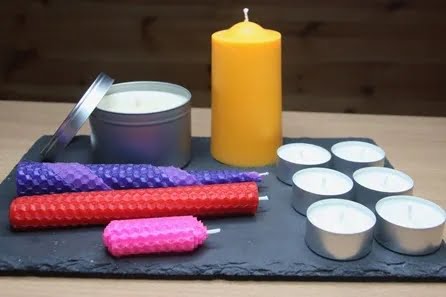Candle making is a popular and lucrative business, with a growing number of individuals turning their passion for crafting into a profitable venture. However, is candle making high liabilities?
In this article, we will explore the world of candle making, examining the risks and liabilities associated with this industry. From regulatory compliance and safety standards to legal considerations and liability insurance, we will delve into the common issues and challenges that candle makers may face, as well as the importance of proper training and education in minimizing risks and ensuring safety.
As we journey through the intricacies of candle making, it is important to understand the potential risks and liabilities that come with this craft. While the art of creating beautiful candles can be rewarding, it also requires careful attention to safety protocols and compliance with industry regulations. By gaining a comprehensive understanding of these aspects, individuals can navigate potential legal pitfalls and make informed decisions within the candle making business.
Throughout this article, we will provide insights into how to effectively manage liabilities in candle making, including practical strategies for minimizing risks and ensuring a safe working environment. Furthermore, we will emphasize the importance of proper training and education in equipping individuals with the knowledge and skills necessary to succeed in this industry.
Whether you are an experienced candle maker or someone considering entering this field for the first time, this article aims to provide valuable information on navigating the complexities of candle making business.
Understanding the Risks and Liabilities
Candle making, like any other manufacturing process, comes with its own set of risks and liabilities. Understanding these risks is crucial for anyone involved in the candle making business. This section will explore the various risks and liabilities associated with candle making and how they can be managed.
Fire Hazards and Safety Risks
One of the most significant risks associated with candle making is the potential for fire hazards. The use of hot wax, open flames, and heating equipment increases the risk of accidental fires in the production area. In addition to fire hazards, there are also safety risks associated with working with hot wax and chemicals. Burns, slips, trips, and falls are common in candle making facilities.
Health Risks and Environmental Liabilities
In addition to fire hazards and safety risks, there are also health and environmental liabilities to consider in candle making. Exposure to certain chemicals used in fragrance oils and dyes can pose health risks to workers. Proper ventilation and protective gear are essential for mitigating these risks. Moreover, improper disposal of waste materials can lead to environmental liabilities.
Product Liability
Another significant liability in candle making is product liability. Poorly made candles can pose a risk to consumers, leading to potential lawsuits if someone is injured or their property is damaged as a result of using your candles. Ensuring that your products meet regulatory standards and conducting thorough quality control checks can help minimize this risk.
Regulatory Compliance and Safety Standards
Importance of Regulatory Compliance
When it comes to candle making, regulatory compliance is crucial for ensuring the safety of the products and protecting the consumers. The regulations set forth by government agencies are in place to prevent any harm caused by candles, such as fires, injuries, or health issues. It is important for candle makers to be aware of these regulations and comply with them to avoid potential liabilities.
Safety Standards in Candle Making
In addition to regulatory compliance, candle makers should also adhere to industry safety standards. This includes using safe ingredients, following proper manufacturing processes, and conducting thorough quality control checks. By meeting these safety standards, candle makers can minimize the risks associated with their products and operate their businesses responsibly.
The Role of Quality Assurance Programs
Implementing quality assurance programs is essential for ensuring that candles are manufactured in a safe and consistent manner. These programs involve regular inspections, testing, and documentation of production processes. By having robust quality assurance programs in place, candle makers can demonstrate their commitment to producing safe products and reduce potential liabilities.
It is clear that candle making involves high liabilities if proper regulatory compliance and safety standards are not met. Therefore, it is imperative for those in the industry to prioritize adherence to regulations and safety protocols in order to mitigate risks and protect themselves from legal consequences.
Common Issues and Challenges in Candle Making
Candle making is a popular hobby and business venture for many people, but it is not without its challenges. One of the most significant issues in candle making is ensuring that the products are safe for use. This includes using the right materials, such as wicks and wax, and ensuring that the candles burn cleanly and evenly. Additionally, achieving consistency in color, scent, and size can be a challenge for candle makers.
Another common issue in candle making is meeting regulatory compliance and safety standards. In many regions, there are strict regulations regarding the use of certain materials in candles, as well as labeling requirements. Violating these regulations can result in hefty fines or even legal action. Therefore, it is crucial for candle makers to stay informed about these standards and ensure that their products meet all necessary requirements.
One of the most important considerations when it comes to candle making is liability insurance. While this may seem like an additional expense, it can provide essential protection in case of any accidents or injuries caused by the candles. Liability insurance can cover legal fees, medical expenses, and even settlements if a customer sues due to an injury or damage caused by a candle. It is a crucial investment for anyone involved in candle making business.
| Issues | Challenges |
|---|---|
| Safety Compliance | Regulatory Standards |
| Consistency | Liability Insurance |
| Materials Usage | Risks Management |
Legal Considerations and Liability Insurance
When it comes to candle making, there are important legal considerations and liabilities that cannot be ignored. One of the main risks involved in this industry is the potential for fires and accidents. As a result, candle making is considered a high liability business. This is why understanding the legal aspects of this craft is essential for anyone looking to start a candle making business.
In addition to fire risks, there are also other potential hazards associated with candle making such as burns from hot wax, allergic reactions to fragrances or dyes, and even product liability claims if a customer suffers harm from using your candles. It’s crucial to be aware of these risks and take proactive measures to minimize them.
As a candle maker, it’s important to comply with regulatory standards and safety requirements. This includes properly labeling your products, using safe ingredients, and following proper manufacturing practices. However, even with the best practices in place, accidents can still happen which is why having liability insurance is crucial for protecting your business from financial ruin in case of lawsuits.
| Category | Data |
|---|---|
| Risks Involved | Potential for fires, accidents, burns, allergies |
| Safety Requirements | Regulatory standards compliance, proper labeling, safe ingredients |
| Liability Insurance Importance | Protection from financial ruin in case of lawsuits |
Minimizing Risks and Ensuring Safety in Candle Making
When it comes to candle making, ensuring safety and minimizing risks is crucial for any business or individual involved in this industry. Here are some important steps to take in order to mitigate liabilities and promote a safe candle making environment:
1. Use high-quality materials: One of the key factors in minimizing risks in candle making is using only high-quality materials. This includes using pure, natural waxes, as well as fragrance oils and dyes that are specifically designed for candle making. By using top-notch ingredients, you can reduce the risk of fire hazards and other safety issues.
2. Follow proper guidelines: It is essential to follow proper guidelines and instructions when it comes to melting wax, adding fragrance oils, and handling equipment. This includes using a double boiler system for melting wax, carefully measuring fragrance oils, and always working in a well-ventilated space. Following these guidelines can help prevent accidents and ensure a safe working environment.
3. Regular maintenance of equipment: Proper maintenance of equipment such as wax melters, thermometers, and molds is essential for preventing potential hazards. Regularly inspecting and cleaning your equipment can help identify any potential issues before they escalate into safety concerns.
By taking these proactive steps towards safety in candle making, you can greatly reduce the liabilities associated with this craft. It allows you to focus on creating beautiful candles while maintaining a safe work environment for yourself or your employees.
Importance of Proper Training and Education
Candle making may seem like a simple and harmless hobby or business venture, but the reality is that there are risks and liabilities involved. It is essential for individuals involved in candle making to understand the importance of proper training and education to minimize these risks.
Without the necessary knowledge and skills, candle makers may encounter various hazards that could lead to accidents and legal issues. By undergoing proper training and education, individuals can familiarize themselves with best practices, safety measures, and regulatory standards in the industry.
Here are some reasons why proper training and education are crucial for those involved in candle making:
- Understanding of candle making techniques: Proper training allows individuals to learn different methods of creating candles, including melting, pouring, molding, and scenting. This knowledge helps reduce the risk of accidents during the production process.
- Knowledge of safety protocols: Education in candle making teaches individuals about the potential hazards associated with handling hot wax, fragrances, dyes, and other materials. With this understanding, they can implement safety protocols to protect themselves and others from harm.
- Compliance with regulations: Training equips candle makers with knowledge of the regulatory requirements related to labeling, packaging, ventilation, storage of materials, and more. This ensures that their products meet industry standards and reduces the risk of legal consequences.
Proper training also emphasizes the importance of ongoing education to stay informed about new developments in candle making techniques, materials, and safety practices. By investing in continuous learning opportunities, individuals can enhance their skills and maintain a safe working environment.
Conclusion
In conclusion, the decision to venture into the world of candle making is not one to be taken lightly. As discussed in this article, candle making does indeed come with its fair share of liabilities and risks. From potential fire hazards to regulatory compliance issues, it is clear that those looking to start a business in this industry must be well-informed and prepared to address these challenges.
However, with the right knowledge, training, and attention to safety standards, it is possible to minimize the risks associated with candle making. By ensuring regulatory compliance, investing in liability insurance, and implementing proper safety measures, entrepreneurs can protect themselves from potential legal issues and financial liabilities.
Ultimately, it is crucial for anyone interested in entering the candle making business to approach it with a thorough understanding of the potential risks and liabilities involved. With proper education and a commitment to safety and regulatory compliance, individuals can make informed decisions that will allow them to enjoy success in this creative and rewarding industry.
Frequently Asked Questions
What Are the Risks of Making Candles?
The risks of making candles include potential fire hazards if the candles are not made or used properly. There is also a risk of burns from hot wax or fragrance oils, as well as respiratory issues from inhaling soot and other candle-making materials.
How Profitable Is Candle-Making?
Candle-making can be profitable, but it depends on various factors such as the quality of the candles, production costs, and market demand. Some candle-makers are able to turn a significant profit through online sales, local markets, and wholesale distribution.
What Type of Insurance Is Needed for Candle-Making?
For candle-making, it is important to have liability insurance to protect against any potential accidents or injuries related to the business. Product liability insurance can also be essential in case customers experience any issues with the candles themselves. Additionally, property insurance may be necessary to cover equipment and inventory in case of damage or theft.

Welcome to my candle making blog! In this blog, I will be sharing my tips and tricks for making candles. I will also be sharing some of my favorite recipes.

